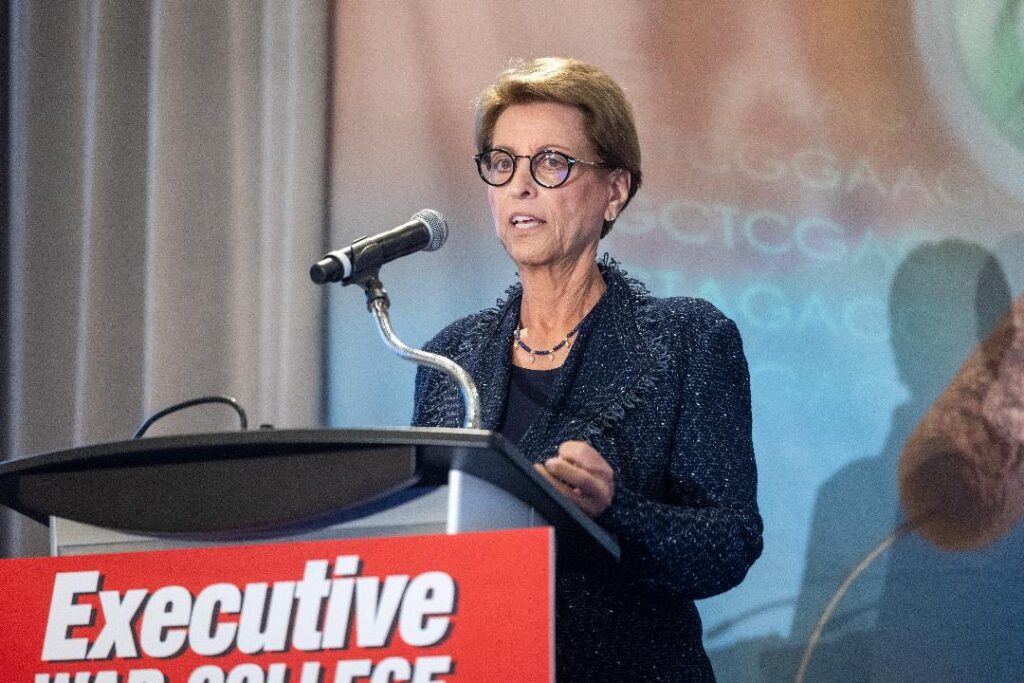FDA announces final rule on Lab-Developed Tests LDTs) as Clinical Lab Leaders Meet in New Orleans
Regulatory changes were the talk of the 29th Annual Executive War College, with attendees buzzing about Monday’s US Food and Drug Administration (FDA) announcement that it had finalized the rule on laboratory developed tests (LDTs). The timing was perfect at the first full day of the New Orleans event, which is focused on diagnostics, clinical laboratory, and pathology management, and featured a bevy of experts to walk the audience through the current state of the regulatory landscape.
“The timing of EWC with the release of this policy couldn’t be better,” CEO and founder of Momentum Consulting Valerie Palmieri told Dark Daily in an interview at Monday night’s opening reception. “It’s a great conference to not only catch up with colleagues but really hear and have those difficult discussions about where we are today, where we’re going, and where we need to be.”
Final LDT rule ‘radically’ different than draft
Tim Stenzel, MD, PhD, former director of the FDA’s Office of In Vitro Diagnostics called the finalized rule “radically different” from the proposed rule. In some ways it is less complex: “The bar is lower,” he said, noting that he was voicing his personal views and not those of the federal agency. “I was convinced that there would be lawsuits, but I’m now not sure if that’s advisable.”
Still, laboratory teams will have to parse the more than 500-page document to determine how the final rule relates to their specific circumstances. After that, it won’t be as challenging, Stenzel said.
His advice: First, read the rule. Second, reach out to FDA for help—he’s sure, he said, that the office is geared up to respond to a “ton of questions” about the implications for individual labs and are standing by to answer emails from labs. And, he added in a discussion session, emailing the agency is free.
The final rule will be in force 60 days after it’s published. Stenzel provided a timeline for some of the milestones:
1 Year: Comply with MD(AE) reporting and reporting of corrections and removals.
2 Years: Comply with labeling, registration and listing, and investigational use requirements.
3 Years: QS records and, in some cases, design controls and purchasing controls.
3.5 Years: Comply with high risk (class III) premarket review requirements.
4 Years: Comply with moderate and low-risk premarket review requirements.

Lâle White, Executive Chair and CEO of XiFin, Inc.
Big changes bring big opportunities
Executive Chair and CEO of XiFin, Inc. Lâle White welcomed the audience with a morning keynote entitled “Big Changes in Healthcare” on new regulations and diagnostics players poised to reshape lab testing.
The diagnostics business is in constant flux, she noted, from payer requirements to greater regulatory and compliance burdens on labs. Other factors include the growing senior population and increasingly complex health conditions, rising costs throughout the healthcare ecosystem, falling funding and reimbursement, and staffing shortages.
As for the economic challenges, consumers are increasingly making decisions based on cost, convenience and quality. The population is shifting to Medicare advantage, which is more cost effective. But changes to the star ratings system will mean lower pay for payer organizations. Those companies will, in turn, mitigate their losses by making changes to pre-authorizations and tightening denials, even for clean claims.
Still, White said, more money isn’t the answer.
White urged the audience to use technology, including artificial intelligence and advances in genetic testing, to manage these and other industry changes.
“We need to optimize the tests we order,” she said. “And if we did that, lab diagnostics really has the potential to change the economics of health and improve outcomes.”
The FDA, Stenzel added, is “very interested” in stimulating innovation, building on the laboratory industry’s success in responding swiftly to the COVID pandemic and outbreaks of Monkey Pox, for example.
CDC: Laboratories on the front line of readiness
The pre-lunch events also included an update on the Centers for Disease Control and Prevention’s Clinical Laboratory Improvement Amendments (CLIA) regulations for clinical laboratories, featuring Reynolds Salerno, director of the division of laboratory systems at the CDC.
He shared lessons learned from recent public health emergencies, talked about CDC’s efforts to engage with clinical labs to improve future public health readiness and response and provided an overview of the CDC’s first laboratory-specific center.
“Laboratories are fundamental to public health,” he said. The industry is on the “front lines” when it comes to identifying threats, responding to them, and preparing for future responses.
Robert Michel, Editor-in-Chief of The Dark Report wrapped up the day’s regulatory discussions with a general session on the “regulatory trifecta” that includes the LDT final rule, CLIA regulations, and private payers’ policies for genetic claims.
–Gienna Shaw


